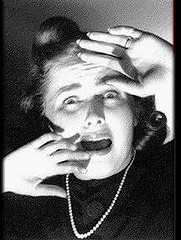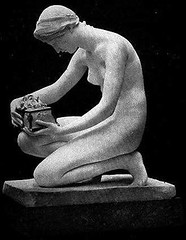It has been one of my experiences that elderly patients are at times over-medicated to the point where they literally do not know what pill they take is for what ailment. When they start describing their medications as the "blue pill" or the "yellow pill", that's not a good sign. And often times, they will not tell their doctor about whatever over the counter drugs they are taking. (This applies to us all, actually. The most common drugs we don't mention are alcohol and nicotine.) Sometimes just having one doctor go over their medications, and side effects of the medications, can actually eliminate many of the symptoms of dementia they might be experiencing. A drug being hailed as the wonder cure for migraine headaches, topiramate, is also one of the worst drugs in the world for memory problems.
 When I worked in the hospital, it was quite common for elderly patients to develop a temporary condition on admittance where they became disoriented, agitated, confused, and at times, combative as the evening approached. We called it "sundowners." There is some school of thought that ties this condition to an early stage of Alzheimer's, but I believe it is just an overload of new information to an aging brain. Once the patient gets familiar with the routine, usually by the second or third day, the Sundowners usually diminishes.
When I worked in the hospital, it was quite common for elderly patients to develop a temporary condition on admittance where they became disoriented, agitated, confused, and at times, combative as the evening approached. We called it "sundowners." There is some school of thought that ties this condition to an early stage of Alzheimer's, but I believe it is just an overload of new information to an aging brain. Once the patient gets familiar with the routine, usually by the second or third day, the Sundowners usually diminishes.Here are some of the symptoms of Dementia:
- Having difficulty recalling recent events.
- Not recognizing familiar people and places.
- Having trouble finding the right words to express thoughts or name objects.
- Having difficulty performing calculations.
- Having problems planning and carrying out tasks, such as balancing a checkbook, following a recipe, or writing a letter.
- Having trouble exercising judgment, such as knowing what to do in an emergency.
- Having difficulty controlling moods or behaviors.Depression is common, and agitation or aggression may occur.
- Not keeping up personal care such as grooming or bathing.*
As you can see, the list of symptoms could apply to a host of many disorders and diseases. Which means that dementia, in and of itself is not so much a primary condition, but a symptom of an underlying condition. Many alcoholics will display these symptoms because of a lack of B vitamins, B1, B12, in their diet. Unfortunately, the same can be true for the elderly, whether it be because of a lack of income, or an inability to prepare meals for themselves. Once these nutrients are replaced and replenished, the symptoms go away.

Hypothyroidism, strokes, diabetes, clogged arteries, insufficient oxygen to the brain because of breathing disorders, and depression can all cause these same symptoms. So, if you know someone who is exhibiting these behaviors, especially if they are of a sudden onset, then get them to a doctor. If they don't want to go, trust me, when the paramedics get there, and ask them a few questions, I can almost guarantee that they'll be going. It would be nice if a family member would intervene in this way. But, more and more, many elderly people are without immediate family, either by distance or lack of concern.

For all you know your crazy neighbor down the street who has taken to watering his petunia's in his jockey shorts may have a frontal lobe brain tumor the size of a pea.
Sometimes, we shouldn't mind our own business.

*courtesy of British Journal of Medicine















